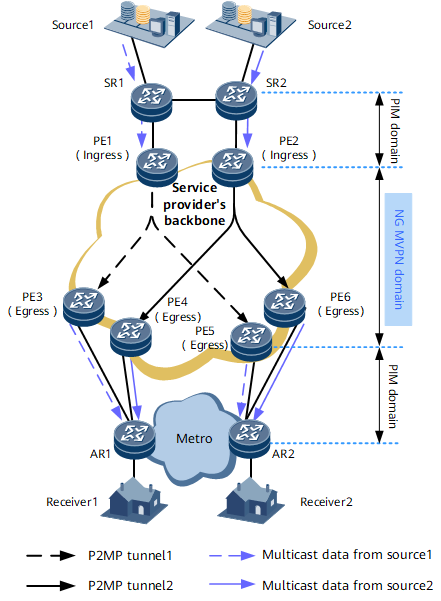Application of NG MVPN to IPTV Services
Overview
Multicast services, such as IPTV services, video conferences,
and real-time multi-player online games, are increasingly used in
daily life. These services are transmitted over service bearer networks
that need to:
- Forward multicast traffic smoothly even during traffic congestion.
- Detect network faults in a timely manner and quickly switch traffic from faulty links to normal links.
- Ensure multicast traffic security in real time.
Networking Description
NG MVPN is deployed on the service provider's
backbone network to solve multicast service issues related to traffic
congestion, transmission reliability, and data security. Figure 1 shows the application of NG MVPN to IPTV services.
Feature Deployment
In this scenario, NG MVPN deployment consists
of the following aspects:
- On the control plane
- Configure a BGP/MPLS IP VPN on the service provider's backbone network and ensure that this VPN runs properly.
- Configure MVPN on the service provider's backbone network, so that PEs belonging to the same MVPN can use BGP to exchange BGP A-D and BGP C-multicast routes.
- Configure P2MP tunnels on the service provider's backbone network.
- Configure PIM on the private network to establish the VPN MDT.
- On the data plane
- Configure static multicast joining on sender PEs (PE1 and PE2) to direct multicast traffic to the P2MP tunnels corresponding to the I-PMSI tunnels.
- Configure receiver PEs (PE3, PE4, PE5, and PE6) not to perform RPF checks.
You can use either single-MVPN or dual-MVPN
networking protection to enhance network reliability or use either
of the following solutions to protect specific parts of the MVPN:
- To protect sender PEs, configure dual-root 1+1 protection.
- To protect P-tunnels, configure P2MP TE FRR or use other MPLS tunnel protection technologies.
